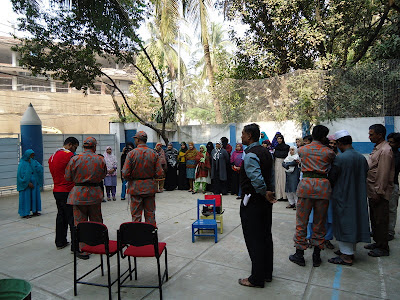Cutting with scissors in properly is an important activity for helping to develop precision hand skills. In order to use scissors correctly, children need sufficient finger and hand strength and stability, sufficient development of the hand arches, hand – eye coordination, bilateral integration skills (using both hands together) and the ability to cross midline. All the same skills contribute to the development of handwriting.
Learning to use scissors properly and acquiring the skill helps to develop the necessary tools for handwriting. The three fingers of the hand controlling the scissors are the ones that are needed to grip a writing tool. The act of opening and closing the scissors helps with hand arch and web space development. The web space is the area formed when the thumb tip and index finger tip touch to form the okay sign. A closed web space can indicate potential writing problems. When children can cut across a straight line, cut out a complex shape and manipulate both the paper and scissors in a controlled manner, they will have achieved precision fine motor skills and good dexterity. Handwriting should evolve nicely as a result.
When scissors are held correctly, and when they fit a child's hand well, cutting activities will exercise the very same muscles which are needed to manipulate a pencil in a mature tripod grasp.
The correct scissor position is with the thumb and middle finger in the handles of the scissors, the index finger on the outside of the handle to stabilize, with fingers four and five curled into the palm.
Importance of the Proper Scissors Grip
Most children explore with their hands outstretched and their palms facing downward. Or, as they get older, they default to holding small items with their thumb and pointer finger (the pincer grip!).
 The proper scissors grip requires a child to rotate his hand so that the thumb faces upward and the pinky finger points at the floor. Then he must spread his thumb and pointer finger as far apart as possible while using his palm to help stabilize the scissors.
As if the proper scissors grip wasn’t complicated enough, your child must also rely on his non-dominant hand to stabilize the paper while his dominant hand uses the scissors.
The proper scissors grip requires a child to rotate his hand so that the thumb faces upward and the pinky finger points at the floor. Then he must spread his thumb and pointer finger as far apart as possible while using his palm to help stabilize the scissors.
As if the proper scissors grip wasn’t complicated enough, your child must also rely on his non-dominant hand to stabilize the paper while his dominant hand uses the scissors.When first learning to use the scissors, the non-dominant hand will simply hold the paper in a stable position as the dominant hand moves the scissors forward. But, as your child begins cutting more complex designs, his non-dominant hand will be responsible for twisting and turning the paper as the dominant hand operates the scissors.
Teaching Your Child the Proper Scissors Grip
Due to the complexity of the correct scissors grip, it is common for young children to hold and try to use scissors incorrectly.
While cutting, your child will also need to learn how to use his non-dominant hand to hold the paper. Initially the non-dominant hand will just need to hold the paper still as the dominant hand moves the scissors forward in a straight line. Eventually, though, the non-dominant hand will need to move and turn the paper as the dominant hand opens and closes the scissor blades.
Most children become interested in using scissors around age two and a half or three.
 Allow your child to practice holding the scissors without trying to cut paper. Since learning to simply hold the scissors correctly is a challenging task, let your child pick up and put down the scissors as many times as he wants before you actually begin teaching him how to use the scissors.
Allow your child to practice holding the scissors without trying to cut paper. Since learning to simply hold the scissors correctly is a challenging task, let your child pick up and put down the scissors as many times as he wants before you actually begin teaching him how to use the scissors. Direct your child to spread his index finger and thumb as widely as possibly, explaining how this motion makes the blades of the scissors open really widely. Then encourage him to close the scissors in one smooth motion. This will help him to make long, smooth (efficient) cuts rather than short, choppy (inefficient) cuts.
 Stay close by and provide constant feedback and guidance until the proper grip is automatic for your child.
Stay close by and provide constant feedback and guidance until the proper grip is automatic for your child.Ask your child to shake your hand. When shaking your hand, your child will naturally rotate his hand so that his thumb goes top and his fingers extend below (pinky finger is closest to the floor). After shaking hands a few times, have your child reach out to shake your hand one last time. This time, pick up a pair of scissors by the closed metal teeth and place the end of the scissors with the finger holes into his outstretched palm. Help him put his thumb in the large circular loop on top and one or two fingers in the larger loop on the bottom.
.
Scissor Activities
- Cutting junk mail, particularly the kind of paper used in magazine subscription cards.
- Making fringe on the edge of a piece of construction paper.
- Cutting play dough with scissors.
- Cutting straws or shredded paper
Related: www.schoolsparks.com
Useful links:















.jpg)



